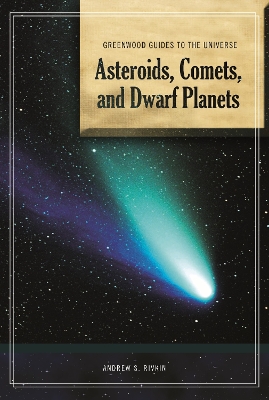Greenwood Guides to the Universe
2 total works
An expert in planetary sciences offers an accessible synopsis of scientific knowledge about the celestial bodies with which we are most familiar-Mercury, Venus, Earth, and Mars.
This volume in the Greenwood Guides to the Universe series covers the inner planets-Mercury, Venus, Earth, and Mars. Thematic chapters discuss all of the many areas of astronomical research surrounding each subject, providing readers with the most up-to-date understanding of current knowledge and the ways in which it has been obtained.
Like all of the books in this series, Inner Planets is scientifically sound, but written with the student in mind. It is an excellent first step for researching the exciting scientific discoveries of the Earth and its closest neighbors.
Guide to the Universe: Asteroids, Comets, and Dwarf Planets
by Andrew S Rivkin
Geared toward students, this guide provides an overview of the small bodies that orbit the sun.
This volume in the Greenwood Guides to the Universe series covers asteroids, comets, and dwarf planets-those small bodies that revolve the Sun-and provides readers with the most up-to-date understanding of the current state of scientific knowledge about them. Scientifically sound, but written with the student in mind, Asteroids, Comets, and Dwarf Planets is an excellent first step for researching the exciting scientific discoveries of the smallest celestial bodies in the solar system.
The book will introduce students to all of the areas of research surrounding the subject, answering many intriguing questions. It defines a dwarf planet and explains why Pluto is one. It looks at how such small bodies form, what they are made of, and what kind of atmospheres might they have. And it asks-and answers-whether asteroids, comets, and dwarf planets present a hazard to the Earth or to spacecraft.

